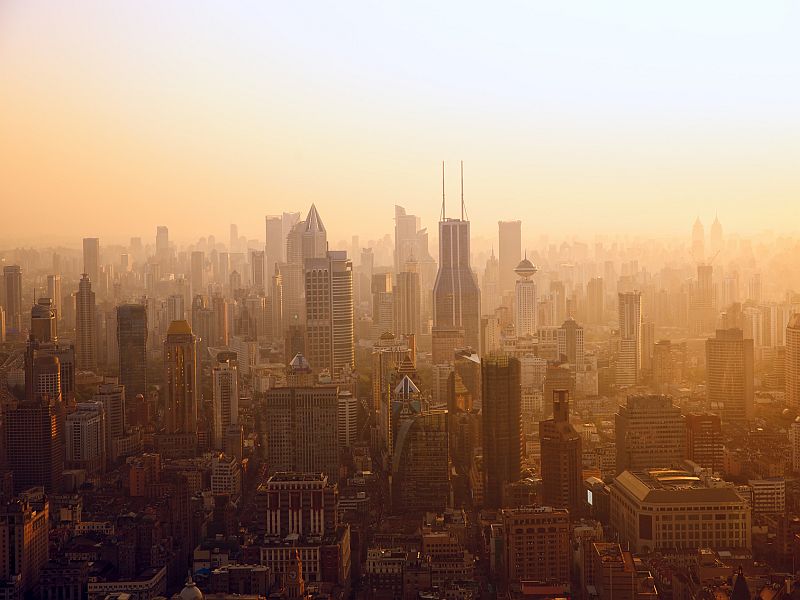Dirty Air Is Deadly, Global Study Confirms
By Serena GordonHealthDay Reporter

WEDNESDAY, Aug. 21, 2019 (HealthDay News) -- Air pollution -- especially the fine particles that you breathe into your lungs -- can shorten your life, a global study reports.
The new research found that short-term exposure to air pollution upped the daily risk of death from all causes. The risk of dying from heart disease, stroke and lung disease also rose with exposure to fine particle air pollution.
Particulate matter (PM) pollution is fine particles in the air. PM pollution can be found in various sizes. PM10 refers to particle matter between 2.5 micrometers and 10 micrometers large. That's smaller than the width of a single hair. Particles this size are produced during industrial crushing or grinding, or as dust stirred up by vehicles, the U.S. Environmental Protection Agency says.
Smaller particles -- PM2.5 -- are less than 2.5 micrometers in size. These particles result from all types of combustion. Possible sources include motor vehicles, power plants, residential wood burning, forest fires, agricultural burning and some industrial processes. These particles are about 30 times smaller than the width of a single human hair, the EPA notes.
The study "found that on average, an increase in 10 micrograms per meter squared in inhalable PM10 and fine particles (PM2.5) is associated with an increase of 0.36% and 0.68% in daily mortality," said study author Antonio Gasparrini.
That might not sound like much. But in a group of 15,000 people, it would translate to about 54 extra deaths related to PM10, and 102 associated with PM2.5 pollution, said Gasparrini, an associate professor of biostatistics and epidemiology at the London School of Hygiene and Tropical Medicine in England.
He explained that while the risk for any one individual is low, it's worrisome at the population level.
"The main message [from the study] is about the risk associated with pollution and the importance of air quality standards and limits," Gasparrini said, adding: "There is a substantial excess mortality that occurs with pollution levels below the current limits, which should, therefore, be tightened, not relaxed."
The study compared daily data on air pollution and mortality for 652 cities from 24 countries or regions. Researchers controlled the data to account for gaseous pollutants.
The findings were published Aug. 22 in the New England Journal of Medicine.
The author of an accompanying editorial, Dr. John Balmes, said the study was "important, though not groundbreaking." He said it's well-known that particulate matter pollution is linked to poor health outcomes.
The strength of this study is its large size and global data, said Balmes, a professor of environmental health sciences at the University of California, Berkeley, and a professor of medicine at University of California, San Francisco.
Like other studies on PM pollution, this one cannot definitively show a cause-and-effect relationship.
But Balmes likened it to the association between smoking and lung cancer. It would be unethical to do a study that definitively proves smoking causes lung cancer, because researchers would have to expose people to enough smoke to cause the disease. Yet doctors don't question the link between smoking and lung cancer.
Likewise, with air pollution, to definitively prove the link, you would need to deliberately expose people to PM pollution. But Balmes said this study and many that have come before it make the link clear.
Particles from pollution deposit in the lungs where they likely cause injury and inflammation, he said. That inflammation then triggers a response throughout the body that can increase the risk of hardening in the blood vessels, which can lead to a heart attack and other serious health concerns.
So, what can be done to reduce the risk of death from particulate matter pollution? Gasparrini said the best way is to adopt specific policies to reduce pollution levels.
"These include, among others, technological developments to reduce emission from traffic and cleaner energy production," he said. "This has been done successfully in the last decades, in particular in the United States."
But that may be changing. The Trump administration has proposed rolling back some clean air regulations from the Obama era and even earlier. The proposed changes would likely add pollution and greenhouse gases into the environment, according to published reports. Twenty-nine states are suing to block some of these changes.
Balmes said some areas in the United States are taking matters into their own hands. An example is California, a leader in cleaner air regulations and clean energy sources that also has a booming economy, he said.
"The public needs to realize that air pollution is an important risk factor for public health. We've made changes, but we can get cleaner air yet. The co-benefit of cleaner energy and transportation changes for public health is a benefit in terms of climate change, too," he said.
More information
Learn how to reduce your exposure to air pollution from Consumer Reports.

The news stories provided in Health News and our Health-E News Newsletter are a service of the nationally syndicated HealthDay® news and information company. Stories refer to national trends and breaking health news, and are not necessarily indicative of or always supported by our facility and providers. This information is provided for informational and educational purposes only, and is not intended to be a substitute for medical advice, diagnosis, or treatment.

